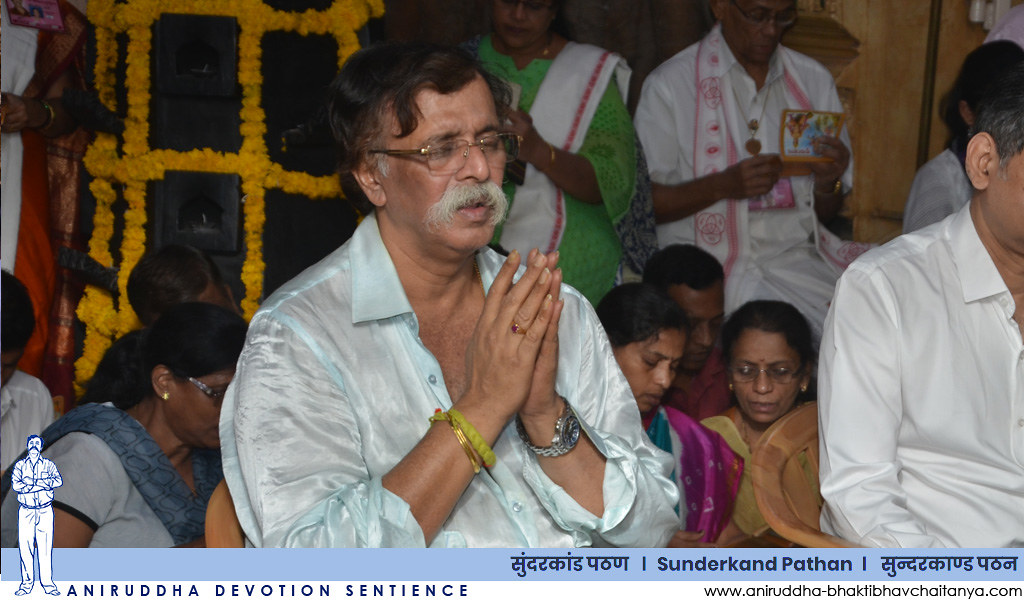Overview
Introduction to Sunderkand
Sunderkand is an epic in Hindu mythology that forms a part of the Indian epic, Ramayana. It is composed by the sage Valmiki and is considered to be one of the most important chapters in the Ramayana. Sunderkand focuses on the journey of Hanuman, the monkey god, to Lanka in search of Sita, Lord Rama’s wife, who has been kidnapped by the demon king, Ravana. This chapter showcases the bravery, loyalty, and devotion of Hanuman towards Lord Rama. The story of Sunderkand is filled with adventure, courage, and divine intervention, making it a captivating tale in the Ramayana.
Importance of Characters in Sunderkand
The characters in Sunderkand play a crucial role in the epic story. Each character brings a unique perspective and contributes to the overall narrative. One of the most important characters is Hanuman, the mighty monkey god. Hanuman’s unwavering devotion and incredible strength make him a central figure in Sunderkand. Another significant character is Lord Rama, the protagonist of the Ramayana. Rama’s righteousness and determination inspire the other characters and drive the plot forward. Sita, Rama’s wife, also plays a vital role in Sunderkand. Her unwavering faith and resilience in the face of adversity serve as a source of inspiration for the other characters. Other important characters include Lakshmana, Ravana, and Vibhishana. Each character brings their own unique qualities and motivations to the story, adding depth and complexity to the narrative.
Purpose of Delving into the Characters
The purpose of delving into the characters in the article ‘Delving Into the Characters of Sunderkand’ is to provide a deeper understanding of the story and its significance. By examining the traits, motivations, and actions of the characters, readers can gain insights into their roles in the epic narrative. One of the key characters in Sunderkand is the divine monkey army, which plays a crucial role in the journey of Lord Hanuman. The army’s bravery, loyalty, and strategic skills are highlighted throughout the story, making them an integral part of the narrative. By exploring the characters, including the divine monkey army, readers can appreciate the complexity and depth of the epic tale.
Lord Hanuman

Background and Birth of Lord Hanuman
The background and birth of Lord Hanuman are fascinating aspects of the Sunderkand. Lord Hanuman, also known as the Monkey God, is a central character in the epic Ramayana. He is the son of Anjana and Kesari, and his birth is said to be a result of a boon granted by Lord Shiva. According to the legend, Anjana and Kesari were devout followers of Lord Shiva and performed intense prayers to have a child. Pleased with their devotion, Lord Shiva granted them a son who would possess immense strength and intelligence. Thus, Lord Hanuman was born in the kingdom of monkeys, Kishkindha. His birth marked the beginning of a remarkable journey filled with valor, devotion, and selflessness. The background and birth of Lord Hanuman set the stage for the extraordinary adventures that unfold in the Sunderkand.
Characteristics and Powers of Lord Hanuman
Lord Hanuman, also known as the Monkey God, is one of the most revered characters in Hindu mythology. His characteristics and powers make him a unique and extraordinary deity. Hanuman is depicted as a strong and mighty figure with a muscular physique. He possesses immense physical strength, which is evident from his ability to carry mountains and leap across vast distances. Hanuman is also known for his unwavering devotion to Lord Rama, his master. His loyalty and dedication are unparalleled, and he is considered the epitome of devotion. Additionally, Hanuman is believed to possess supernatural powers, including the ability to change his size at will and to fly. These powers, combined with his intelligence and wisdom, make him a formidable force to be reckoned with. Hanuman’s character is not only admired for his physical prowess but also for his humility and humility. He is often depicted as a humble servant, always ready to serve and assist those in need. Lord Hanuman’s characteristics and powers are a source of inspiration and admiration for millions of devotees around the world.
Significance of Lord Hanuman in Sunderkand
The significance of Lord Hanuman in Sunderkand cannot be overstated. Lord Hanuman plays a crucial role in the epic tale of the Ramayana, and his presence in Sunderkand is particularly meaningful. As the ardent devotee of Lord Rama, Hanuman embodies unwavering loyalty, strength, and devotion. His actions and decisions throughout Sunderkand showcase his deep commitment to his mission and his unwavering determination to help Lord Rama. Hanuman’s journey in Sunderkand is filled with obstacles and challenges, but his unwavering faith and dedication allow him to overcome every hurdle. His selflessness and courage inspire readers to believe in the power of devotion and the triumph of good over evil. In Sunderkand, Lord Hanuman’s character represents the embodiment of devotion and serves as a symbol of hope and righteousness.
Lord Rama

Introduction to Lord Rama
Lord Rama, the seventh avatar of Lord Vishnu, is one of the most revered figures in Hindu mythology. He is known for his unwavering devotion, righteousness, and exemplary leadership qualities. Born as the eldest son of King Dasharatha and Queen Kaushalya, Lord Rama spent his early years in Ayodhya, the capital city of the Kosala kingdom. He was married to Sita, the princess of Mithila, and together they formed a divine couple. Lord Rama’s life is a perfect embodiment of dharma and his journey in the epic Ramayana, particularly in the chapter of Sunderkand, showcases his courage, wisdom, and compassion. This article delves into the various aspects of Lord Rama’s character and explores the significance of his role in Sunderkand.
Qualities and Virtues of Lord Rama
Lord Rama, the central character of the epic Ramayana, is revered for his numerous qualities and virtues. He embodies the ideals of righteousness, compassion, and selflessness. Lord Rama’s unwavering devotion to duty and his commitment to upholding dharma make him an exemplary figure. His courage and valor are unmatched, as he fearlessly faces challenges and overcomes obstacles. Lord Rama’s love and respect for all beings, his humility, and his ability to forgive are qualities that inspire and touch the hearts of people. His leadership skills and wisdom are evident in his ability to make fair and just decisions. Lord Rama’s journey in the Sunderkand, a chapter in the Ramayana, showcases his determination, perseverance, and unwavering faith in the face of adversity. This chapter highlights Lord Rama’s unwavering devotion to his beloved wife Sita and his relentless efforts to rescue her from the clutches of the demon king Ravana. The Sunderkand is a significant part of the Ramayana and serves as a reminder of Lord Rama’s divine qualities and virtues.
Role of Lord Rama in Sunderkand
Lord Rama plays a crucial role in Sunderkand, the epic chapter of the Ramayana. As the central character, Lord Rama showcases his unwavering devotion, courage, and determination throughout the narrative. His journey to rescue his beloved wife, Sita, from the clutches of the demon king, Ravana, is filled with numerous challenges and tests of character. Lord Rama’s unwavering faith in righteousness and his unwavering commitment to fulfilling his responsibilities as a king and husband serve as an inspiration to all. His actions and decisions in Sunderkand highlight the importance of righteousness, loyalty, and perseverance in the face of adversity. Lord Rama’s role in Sunderkand is a testament to his divine nature and his embodiment of the ideals of dharma.
Sita

Introduction to Sita
Sita, the central female character in the epic Ramayana, holds a significant place in Indian mythology. She is known for her unparalleled beauty, unwavering devotion to her husband Lord Rama, and her strength of character. Sita’s introduction in the epic is marked by her birth from the Earth and her subsequent adoption by King Janaka. As the daughter of the Earth, Sita is believed to embody purity and grace. Her marriage to Lord Rama is considered an ideal union, symbolizing love, loyalty, and sacrifice. Throughout the Ramayana, Sita’s character evolves, showcasing her resilience, wisdom, and unwavering faith in the face of adversity. Her abduction by the demon king Ravana and her subsequent ordeal in Lanka are the defining moments in her story, highlighting her courage and determination. Sita’s character serves as an inspiration for women across generations, emphasizing the importance of integrity, devotion, and inner strength.
Sita’s Devotion and Strength
Sita’s devotion and strength are exemplified throughout the epic of Sunderkand. Despite being held captive by Ravana, Sita never loses hope and remains steadfast in her faith. Her unwavering devotion to Lord Rama is evident in her refusal to marry Ravana, even when faced with immense pressure. Sita’s strength also shines through when she endures the hardships of captivity, never succumbing to despair. One of the key characters who plays a crucial role in Sita’s journey is Hanuman. Hanuman’s unwavering loyalty and determination to find Sita and bring her back to Lord Rama is a testament to his devotion. His extraordinary abilities and courage enable him to overcome numerous obstacles and ultimately locate Sita in Lanka. Hanuman’s role in Sunderkand highlights the importance of loyalty, bravery, and selflessness in the face of adversity.
Sita’s Role in Sunderkand
Sita plays a crucial role in Sunderkand. As the wife of Lord Rama, she is portrayed as a symbol of purity, devotion, and strength. Throughout the epic, Sita remains steadfast in her love and support for her husband, even in the face of adversity. Her unwavering faith and unwavering commitment to righteousness serve as an inspiration to readers. Sita’s selflessness and sacrifice are highlighted in her decision to accompany Lord Rama into exile, despite the hardships that await her. Her role in Sunderkand showcases her resilience and determination, making her a beloved character in Hindu mythology.
Ravana

Introduction to Ravana
Ravana is one of the most fascinating characters in the epic of Ramayana. He is depicted as a powerful and intelligent demon king who ruled over Lanka. Ravana’s character is complex and multi-dimensional, making him a compelling figure in the story. He is known for his ten heads, which symbolize his immense knowledge and wisdom. Ravana is also a skilled musician and is often associated with the divine instrument called Gaana. His mastery of Gaana is said to have mesmerized both gods and demons alike. Despite his villainous actions, Ravana is also portrayed as a tragic figure, driven by his own desires and ultimately meeting his downfall due to his arrogance and ego. The character of Ravana serves as a reminder of the complexities of human nature and the consequences of unchecked power.
Ravana’s Power and Ambition
Ravana’s Power and Ambition: Ravana, the primary antagonist in the epic Ramayana, is known for his immense power and insatiable ambition. As the king of Lanka, Ravana possessed extraordinary strength and magical abilities that made him a formidable opponent. His devotion to Lord Shiva further amplified his powers, making him virtually invincible. Ravana’s ambition knew no bounds, as he sought to conquer not just Lanka but also the entire world. His lust for power led him to abduct Sita, the wife of Lord Rama, which ultimately led to his downfall. Despite his evil deeds, Ravana’s character is a complex one that highlights the consequences of unchecked power and ambition.
Ravana’s Role as the Antagonist in Sunderkand
Ravana’s role as the antagonist in Sunderkand is crucial to the overall narrative. As the powerful demon king of Lanka, Ravana poses a formidable challenge to Lord Hanuman and his mission to find Sita. Ravana’s character is characterized by his arrogance, greed, and lust for power. He is depicted as a cunning and manipulative antagonist who stops at nothing to achieve his goals. His abduction of Sita and refusal to release her despite repeated warnings from Lord Rama showcases his defiance and stubbornness. Ravana’s role as the antagonist adds depth and complexity to the story, highlighting the eternal struggle between good and evil.
Other Supporting Characters

Introduction to Other Supporting Characters
In Sunderkand, apart from Lord Hanuman, there are several other supporting characters that play significant roles in the epic. These characters contribute to the overall narrative and provide insights into the various aspects of the story. Understanding the spiritual significance of Sunderkand requires delving into the lives and actions of these supporting characters. Let us explore some of the key characters and their roles in the epic.
1. Jambavan: Jambavan, the wise and powerful bear, is a loyal devotee of Lord Rama. He provides guidance and support to Lord Hanuman during his journey to find Sita. Jambavan’s wisdom and strength are instrumental in the success of Hanuman’s mission.
2. Sugriva: Sugriva, the monkey king, forms an alliance with Lord Rama and helps him in his quest to rescue Sita. He plays a crucial role in the battle against Ravana and his army. Sugriva’s loyalty and bravery make him an important character in Sunderkand.
3. Vibhishana: Vibhishana, Ravana’s brother, is a pivotal character in Sunderkand. He recognizes the righteousness of Lord Rama and joins his side. Vibhishana’s knowledge and strategic insights prove invaluable in the war against Ravana.
These supporting characters, along with Lord Hanuman, contribute to the depth and richness of Sunderkand, making it a fascinating tale of devotion, courage, and spirituality.
Significance of Supporting Characters in Sunderkand
In the epic tale of Sunderkand, the supporting characters play a vital role in shaping the narrative and aiding the protagonist in his journey. These characters bring depth and intricacy to the story, adding layers of emotion and conflict. One of the significant supporting characters is Hanuman, the loyal devotee of Lord Rama. Hanuman’s unwavering devotion and extraordinary strength make him a crucial ally in the search for Sita. Another important character is Jambavan, the wise and experienced bear. Jambavan’s wisdom and guidance help Hanuman overcome obstacles and fulfill his mission. The presence of these supporting characters enhances the overall impact of Sunderkand, making it a captivating and enriching read.
Roles and Contributions of Supporting Characters
In the epic tale of Sunderkand, the supporting characters play crucial roles and make significant contributions to the overall narrative. These characters, although not the main focus of the story, add depth and complexity to the plot. One such character is Hanuman’s trusted companion, Jambavan. Jambavan, a wise and powerful bear, provides guidance and support to Hanuman in his quest to find Sita. His knowledge and experience prove invaluable in overcoming obstacles and ensuring the success of the mission. Another important supporting character is Angad, the son of Vali. Angad displays unwavering loyalty and bravery as he joins Hanuman in his mission. His strength and determination inspire others and contribute to the ultimate victory. Lastly, there is Sugriva, the monkey king who forms an alliance with Lord Rama. Sugriva’s leadership and strategic thinking help in coordinating the efforts of the monkey army and aiding in the search for Sita. These supporting characters, with their unique qualities and contributions, enhance the overall narrative of Sunderkand.
Author Profile

Latest entries
- 28 June 2025BlogHow to Choose the Best High-Yield Savings Account with 5%+ Interest in India (2025 Guide)
- 28 December 2024Blog13 High CPC Blog Niche for 2025
- 28 December 2024BlogTop 6 Employee Management Software for Small Businesses
- 19 December 2024BlogShri Hanuman Chalisa in Hindi Text with English Translation

